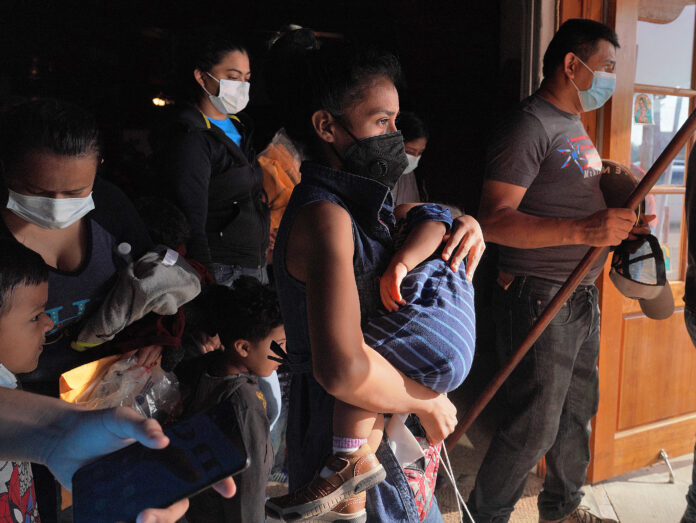
The city of Laredo and the federal government reached a compromise and ended a lawsuit that sought to stop the transfer of migrants from the Rio Grande Valley.
Under the agreement, migrants transferred to Laredo from the Valley no longer stay in the city. Instead, Laredo Mayor Pete Saenz said, they are processed through area Border Patrol, released to city personnel at a city-leased property and sent to other cities, like Austin, Dallas and Houston, aboard four buses contracted by the city.
Buses started running Thursday. As of Monday, about 800 migrants were sent from the Valley to Laredo and taken to other cities, Saenz said.
The lawsuit, originally filed July 16 against the Department of Homeland Security, was dismissed without prejudice Monday in the Laredo division of the Southern District Court of Texas.
U.S. Customs and Border Protection sends migrants to other sectors when capacity or processing capabilities are surpassed in the Rio Grande Valley. When Laredo faced a combination of high hospitalization rates and low shelter capacity due to increased COVID-19 cases, city leaders sued to stop the transfers.
A 10-day reprieve was granted on July 21, but the transfers resumed shortly after Valley Border Patrol facilities held 10,000 people in their custody, a number that represents 783% over the COVID-19 capacity, by Aug. 1.
So far, Saenz estimated the city has spent about $54,000 on the contracted buses, or about $9,000 per day. The expenses for providing humanitarian aid also include personnel, like the city’s firefighters, who have been helping.
The mayor said they spoke with a FEMA representative who assured them reimbursements would be made available to the city and would be retroactive to Jan. 1, 2021.
Aside from added costs, one notable difference to the process under the agreement is testing.
Under the compromise, migrants arriving in Laredo are no longer tested for COVID-19 like they used to be when they were previously released to migrant shelters.
CBP does not provide testing to migrants prior to their release. Instead, shelters, like the Holding Institute in Laredo or Catholic Charities of the Rio Grande Valley, started providing testing when migrants were released to them from federal custody.
“What we’re doing is coordinating with the EMC, the emergency management coordinators, in Austin and Houston, and I believe even Dallas, too,” Saenz explained, adding the NGOs in the corresponding cities are also notified of scheduled trips. “Then, it’s really up to them to continue offering PPEs, masks, hygiene, whatever they require.”
“The reason why we don’t do testing is that once you test, there’s an obligation,” Saenz said. “If they’re positive, we’re told that you have to quarantine. We don’t have the infrastructure for that.”
Migrants tested for COVID-19 at local shelters were triggering high quarantine rates that led to temporary shutdowns in Laredo.
The mayor said they made a decision to contract buses when faced with a different alternative.
“Border Patrol was very clear that they were just going to put them out in the street, in our plazas. And, of course, we couldn’t have that,” Saenz said.
A spokesperson for U.S. Customs and Border Protection provided a statement that said the increase led them to transfer migrants they cannot process in one area to other parts of the border.
“In order to process individuals as safely and expeditiously as possible, unprocessed individuals may be transported via air or ground transportation to other Sectors along the Southwest border,” the statement read. “The operational need for these sector-to-sector transfers is assessed daily based on the processing capability and facility capacity of each sector and not by external influences.”
Space in Laredo’s hospitals continues to recede as the number of COVID-19 cases grows, though Saenz clarified he did not attribute the rise in cases to the migrants.
Resources are stretched thin.
“At this point, we’ve had zero ICU beds in the last seven days,” the mayor said. “We’ve had people in overflow, basically waiting for a hospital bed out in the hallways. I think today we had close to 40 just waiting for a room.”
Saenz said a shortage in staffing further reduces their ability to provide sufficient care.
“I know some people may say, ‘you’re basically transporting untested people to other cities.’ And the answer is ‘yes.’ But what alternative do we have here, locally?”



